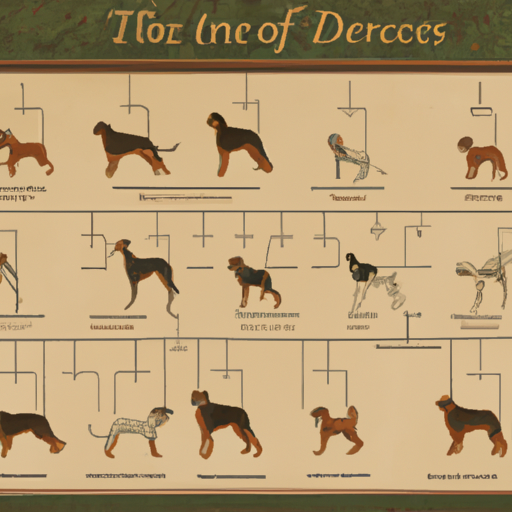Understanding the Basics of Pedigree
As a caregiver to your beloved pooch, you should know that when we talk about a dog’s pedigree, we’re delving into their family tree. Understanding pedigree can be likened to piecing together a jigsaw puzzle, where each piece represents a generation of dogs from your pet’s ancestral lineage.
Traditionally, a pedigree chart provides information about a dog’s ancestry for at least three to five generations back. These charts can reveal crucial details about a dog’s lineage, including:
- The dog’s parents and grandparents: This is the immediate family of your dog.
- The breed of the dogs: This helps determine if your dog is a purebred.
- Any awards or titles the ancestors may have won: This can indicate certain traits or abilities your dog may have inherited.
The Importance of Pedigree in Dogs
Do you ever wonder why your dog behaves a certain way, or why it has a particular physical trait? The answers often lie within their ancestry, their pedigree.
- Health: Pedigree can provide insight into potential inherited health issues. Certain breeds are prone to specific health conditions, and understanding your dog’s pedigree can help anticipate, prevent, or manage these conditions.
- Behavior: Certain breeds have distinct behavior traits. Knowing your dog’s pedigree can help you understand their behavior and provide appropriate training.
- Breed Standards: If you’re interested in showing your dog, pedigree is crucial. It verifies that your dog meets the breed standards set by kennel clubs.
Deciphering a Pedigree Chart
Understanding a pedigree chart can feel like deciphering an ancient script. But don’t worry; we’ve got you covered. Here’s a simple table to help you decode a pedigree chart:
| Symbol | Meaning |
|---|---|
| Square | Male Dog |
| Circle | Female Dog |
| Diamond | Dog of Unknown Sex |
| Horizontal Line Connecting Shapes | Mating |
| Vertical Line from Mating Line | Offspring |
The Controversy Surrounding Pedigree
Not everyone is in favor of the emphasis on pedigree. Critics argue that the focus on purebred lineage can lead to inbreeding, resulting in dogs with health problems. Further, it can perpetuate the idea that mixed breed dogs or “mutts” are somehow lesser, even though they often have fewer health issues and equally wonderful personalities.
FAQs
Q: Is a pedigree dog better than a non-pedigree dog?
A: No, neither is inherently better. It depends on what you’re looking for in a dog. Pedigree dogs often have predictable traits, while mixed breeds can have a unique combination of characteristics.
Q: Can a dog be pedigree but not purebred?
A: No, a pedigree dog is a purebred dog with a documented lineage.
Q: How far back does a pedigree go?
A: Typically, a pedigree charts three to five generations, but it can go much further back.
Q: Is a pedigree necessary for my dog’s health?
A: Not necessarily, but it can provide valuable information about potential genetic health issues.
In conclusion, understanding your dog’s pedigree can provide insight into their behavior, health, and history. But remember, pedigree or not, the most important thing is the love and care you provide for your furry friend.



